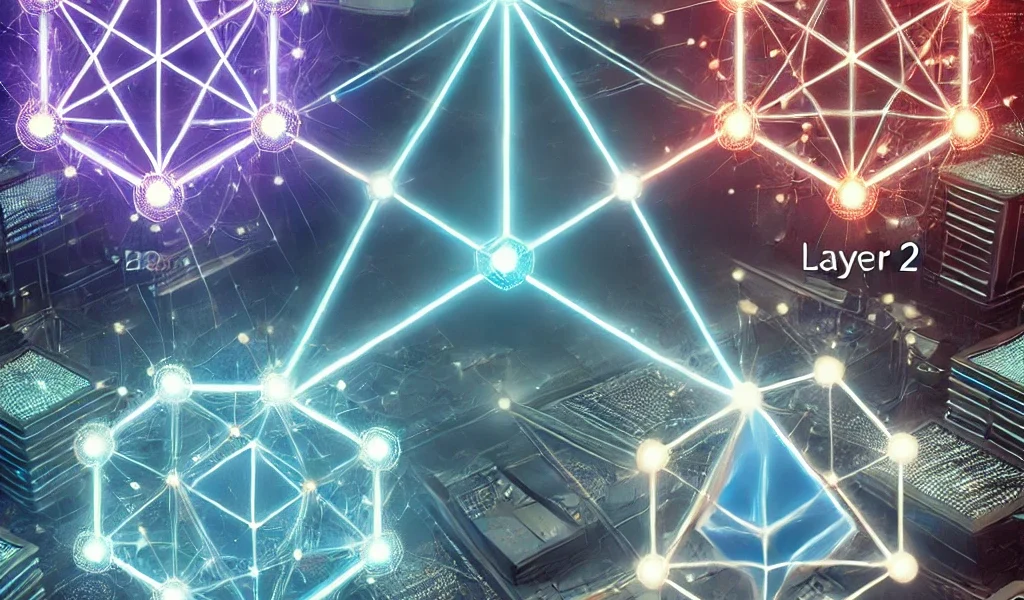Introduction
As Ethereum continues to dominate the blockchain space, scalability remains one of its biggest challenges. High gas fees and network congestion have led to the development of Layer 2 (L2) scaling solutions that aim to improve transaction speed and reduce costs. Three of the most popular Layer 2 solutions today are Polygon, Arbitrum, and Optimism. This article will compare these platforms in terms of their architecture, use cases, security, fees, and adoption, helping you determine which is the best fit for your needs.
What Are Layer 2 Solutions?
Layer 2 solutions are built on top of Layer 1 blockchains like Ethereum to enhance scalability. They operate by processing transactions off-chain or in optimized ways while still benefiting from Ethereum’s security. The three main types of L2 solutions include Rollups, Sidechains, and State Channels.
Polygon, Arbitrum, and Optimism are three prominent Layer 2 solutions that improve Ethereum’s transaction throughput. Each has its own approach to scalability, security, and decentralization.
Polygon: A Versatile Sidechain & Rollup Solution
Overview
Polygon (formerly Matic Network) is a multi-chain scaling solution that supports various Layer 2 technologies, including Plasma, Optimistic Rollups, and zk-Rollups. It functions as a sidechain but is deeply integrated with Ethereum.
Key Features
- Sidechain Mechanism: Polygon operates as a Proof-of-Stake (PoS) sidechain, making transactions faster and cheaper than Ethereum.
- Multiple Scaling Solutions: Supports Optimistic Rollups and zk-Rollups for enhanced scalability.
- High Throughput: Can process up to 65,000 transactions per second (TPS).
- Low Fees: Significantly lower gas fees compared to Ethereum.
Use Cases
- DeFi Applications: Aave, QuickSwap, and other DeFi protocols have been built on Polygon.
- NFT Marketplaces: OpenSea and other platforms use Polygon to reduce minting costs.
- Gaming & Metaverse: Used in blockchain games like Decentraland and The Sandbox.
Security and Decentralization
- Polygon relies on its own set of validators, which means it is not as decentralized as Ethereum itself.
- Regular updates and integration with Ethereum ensure robust security.
Pros & Cons
✅ High scalability and low transaction fees. ✅ Multiple Layer 2 solutions within one ecosystem. ❌ Less decentralized than Ethereum. ❌ Security depends on Polygon’s validator network.
Arbitrum: The Leading Optimistic Rollup
Overview
Arbitrum is an Optimistic Rollup that enhances Ethereum’s capabilities by processing transactions off-chain and batching them before settling on Ethereum.
Key Features
- Optimistic Rollup Technology: Assumes transactions are valid by default, reducing computational overhead.
- EVM Compatibility: Fully supports Ethereum smart contracts without requiring major modifications.
- Decentralized Fraud Proofs: Validators challenge transactions if fraud is detected.
Use Cases
- DeFi Protocols: Uniswap, SushiSwap, and Curve operate efficiently on Arbitrum.
- Smart Contracts: Developers can deploy Ethereum-based dApps without significant changes.
Security and Decentralization
- More decentralized than Polygon as it directly inherits Ethereum’s security.
- Relies on fraud proofs for transaction verification, ensuring security.
Pros & Cons
✅ Higher security due to Ethereum’s layer 1 finality. ✅ Near-zero changes required for Ethereum developers. ❌ Slightly higher fees than Polygon. ❌ Transactions take longer to finalize due to fraud-proof verification.
Optimism: Cost-Effective and Developer-Friendly
Overview
Optimism is another Optimistic Rollup solution designed to provide lower fees and faster transactions while maintaining Ethereum’s security.
Key Features
- Optimistic Rollup Mechanism: Uses fraud proofs to secure transactions.
- Ethereum-Compatible: Supports all existing Ethereum applications with minimal changes.
- Governance via Optimism Collective: A decentralized governance structure ensures community-driven development.
Use Cases
- DeFi: Used by protocols like Synthetix and Uniswap.
- Decentralized Applications: Facilitates dApps with high transaction throughput.
Security and Decentralization
- Inherits security from Ethereum but uses a centralized fraud detection system.
- Plans to move toward greater decentralization over time.
Pros & Cons
✅ Lower fees than Ethereum. ✅ Strong compatibility with Ethereum’s ecosystem. ❌ Currently less decentralized than Arbitrum. ❌ Fraud proof mechanism adds a slight delay to transaction finality.
Comparison Table
| Feature | Polygon | Arbitrum | Optimism |
|---|---|---|---|
| Scaling Method | Sidechain & Rollups | Optimistic Rollup | Optimistic Rollup |
| Security Model | Own Validators | Ethereum Fraud Proofs | Ethereum Fraud Proofs |
| Transaction Speed | Up to 65,000 TPS | ~4,000 TPS | ~4,000 TPS |
| Fees | Very Low | Low | Low |
| Decentralization | Moderate | High | Moderate |
| Adoption | High | Growing | Growing |
Which Layer 2 Solution Should You Choose?
- Choose Polygon if: You need an all-in-one solution with ultra-low fees and high throughput for DeFi, NFTs, and gaming.
- Choose Arbitrum if: You want the best security with full Ethereum compatibility and are willing to accept slightly higher fees.
- Choose Optimism if: You want a cost-effective, developer-friendly platform with strong governance and Ethereum-level security.
Final Thoughts
Layer 2 solutions like Polygon, Arbitrum, and Optimism are revolutionizing Ethereum by enhancing scalability, reducing fees, and maintaining security. Each platform has its strengths and weaknesses, making it essential to choose based on your specific use case. As Ethereum’s ecosystem grows, these Layer 2 solutions will continue to evolve, offering even better scalability and decentralization.
By understanding the differences between Polygon, Arbitrum, and Optimism, you can make a more informed decision on which Layer 2 solution best suits your needs. Happy investing!




